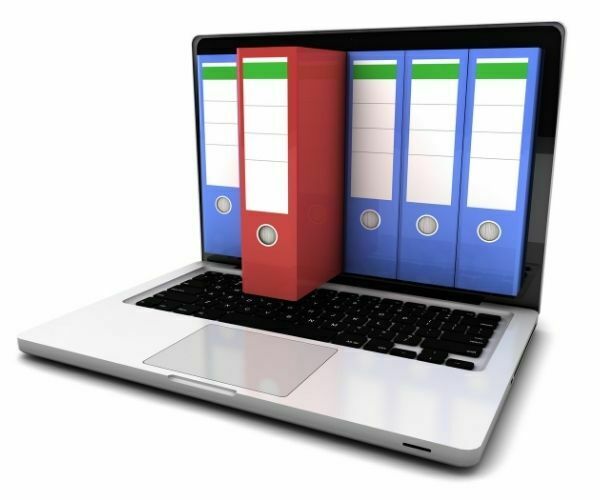Almost every business is keeping track of assets in one way or another. Often, spreadsheets are used to keep a basic register of what assets a company owns. At a certain point though, the lack of asset tracking specific features starts to become an issue for a growing business. Spreadsheets simply can’t keep up with anything but the most simplistic set up.
Let’s look at some of the features that you can benefit from with a dedicated asset tracking software.
Book Assets and Equipment in Advance
Sounds simple, but this gives you the ability to organise and streamline your assets so that you are getting the most out of them. Say each job requires a disc cutter but you only have 2 available. Booking ahead lets you spot this clash before it happens, giving you the space to move stuff around and manage your customer’s expectations.

Check-in and Check-out Equipment
It’s not about creating a culture of observation. It’s about demonstrating that you care about your equipment, so you want to know who has it, and where it is. Many businesses have found that breakages and losses have drastically reduced through implementing a system for checking in and out equipment.
Track Location of Tools and Equipment
Except it is! Asset tracking software can tell you the location of tools and equipment. This gives you control over your assets being slowly lost over time.
With tracking, you have a recourse when you realise that something has gone missing, so that you will likely be able to retrieve it. At least you will be able to investigate effectively. Just check where the item was last seen and who was last responsible for it, and take it from there!
QR Code and Barcode Asset Tagging
Issue Reporting and Management
Attach Photos, Manuals and Forms
For example, you could include uploading a photo in your checking in / out process. This helps you understand when items have been damaged and makes insurance claims hassle-free.
You can give users access to manuals for equipment which can make jobs go quicker as staff can access info without roping in colleagues.
Another way this can help is when equipment breaks down. Add warranty and insurance information to your asset register so that when the inevitable happens, you are ready with a solution.
Whatever the application, there is a great opportunity here to streamline your asset management through gaining access to associated media files.

GPS Asset Tracking Capabilities
GPS tracking can also act like QR codes, but without the need to use scanners to check in. So you can see the last known locations of assets without relying on manual actions.
This is often used in conjunction with other tracking methods. Depending on the asset and its function, you can build up a network of trackers that give you total insight into your equipment.
Handheld & Fixed RFID Capabilities
Handheld scanners are an indispensable part of modern manufacturing and stock management. They are also an incredibly powerful means of tracking assets. Scanning codes with handheld scanners mean that you can see the location of assets without having to rely on memory or complex reporting.
Fixed RFID points work great in a warehouse environment. It works by setting fixed points that constantly search for tags and report back to you on the last known location. So if an asset crosses the fixed-point, you get an update of the last known location. If this kind of technology is new to you, then the good news is that it can be implemented without major investment. Just start small, get a feel for the benefits, and scale up from there.
Create an Accurate Asset Register
With growth comes change. When your organisation is undergoing a lot of change, you will want to focus on protecting the business and not on admin. Through your asset register, you can make bulk changes to your assets. There is no need to make individual changes, simply bulk upload whatever changes are needed.
Auditing is not a word that inspires much excitement. Images of stacks of paper, knotty problems and general chaos come to mind. It needn’t be that way. Having all your PP&E in a single, centralised database (that updates automatically), will make auditing a breeze.

iOS and Android Apps, and Web Portal
Manage Inspection and Maintenance Schedules
Using fit-for-purpose software means you can create an automated schedule that reduces repair costs and lessens the impact of depreciation.
Track Asset Depreciation and Lifecycles
Understanding what your assets are worth at any one time is vital when understanding the overall value of the business. Particularly as this has accounting and tax implications. Without a tech tool to keep track of this, getting a true picture of asset management is a scary prospect. However, with the right tools, automating this process is reasonably straightforward.
Asset life cycles are another key consideration. Tracking when a piece of equipment is reaching the end of its expected lifespan means you can plan for the cost of replacement. There’s also health and safety to think about. Asset tracking management software means that you can guard against your staff working with out-of-date or potentially dangerous equipment.
Image Recognition – Create Assets with AI
Image recognition is a high tech, cost-effective solution to this problem. Using AI, a scanner pulls metadata based on the image and adds the asset to your register. This tried and tested method helps future proof the business without creating mountains of admin.
Configurable Reports and Export

All Of This And More: Choose itemit
Every organisation has its own way of structuring and operating. As such, you need asset management software that can be tailored to fit the way you work, not the other way round.
Book a demo today to see all itemit’s features in action. To find out more details, you can always contact our team at team@itemit.com.

Try itemit
Choose a better way to track
your assets.
Start your free 14-day trial now!

Keep Learning
itemit Blog
Tips, guides, industry best practices, and news.
Your Business Can Benefit From Asset Tracking: Here’s Why
Your business can benefit from using asset tracking software. Want to know how? Read this post now to find out so your business can thrive!
Teachers in Space and itemit demonstrate there really is no limit to asset tracking…
[lwp_divi_breadcrumbs font_icon="5||divi||400"...
2024 – a note from itemit’s Founder
Read a heartfelt message from itemit’s founder, reflecting on the past year’s achievements and outlining the vision and goals for 2024.


